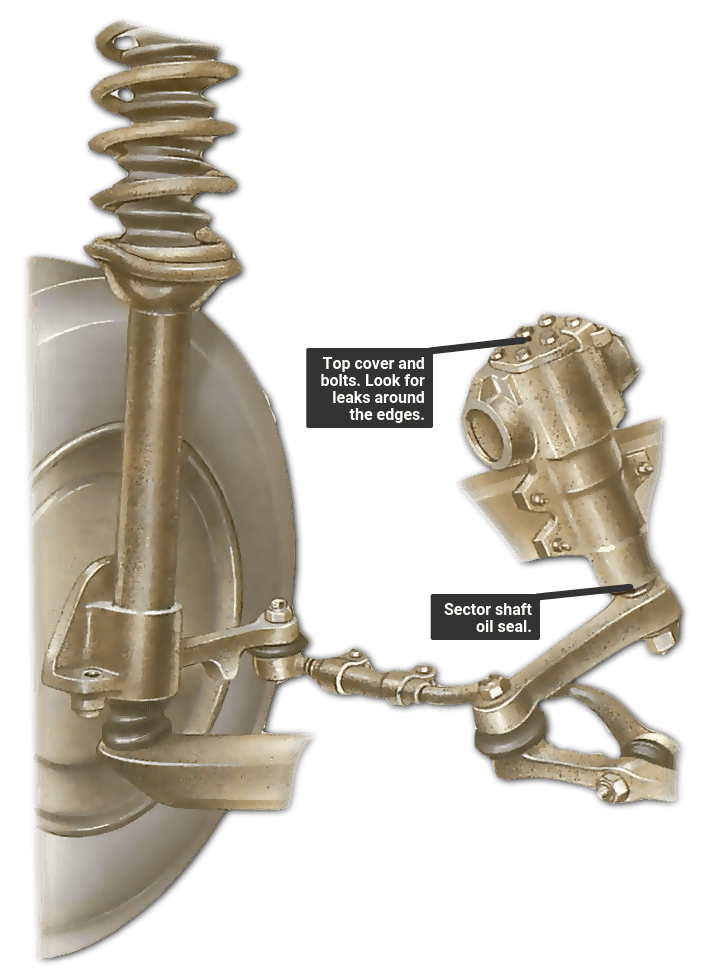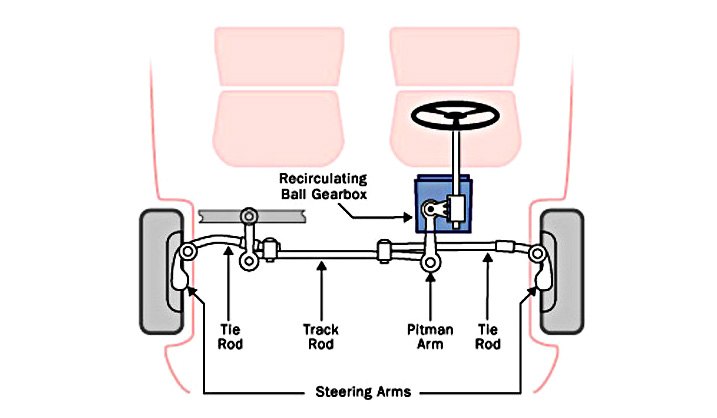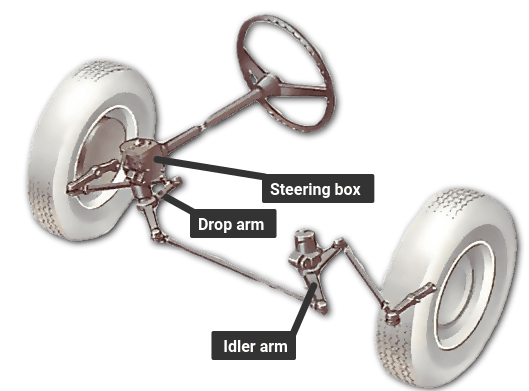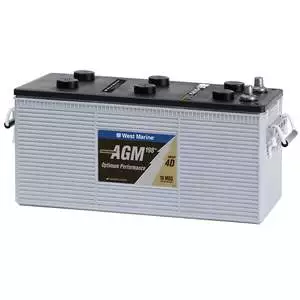What Does a Steering Box Do
A steering box is a mechanical component that converts steering wheel movement into vehicle direction changes. It helps with steering responsiveness and control.
Steering boxes are commonly found in older vehicles and provide a direct connection between the steering wheel and the wheels, allowing the driver to navigate the car effectively. By transmitting the driver’s input to the wheels, the steering box plays a crucial role in ensuring smooth and precise steering operation.
Understanding how the steering box works can help drivers appreciate the mechanics behind their vehicle’s steering system and maintain it properly for optimal performance on the road.
The Purpose Of A Steering Box
A steering box is an essential component of any vehicle’s steering system. It serves the purpose of translating the driver’s input into smooth and controlled movement of the wheels. Essentially, the steering box is responsible for converting the rotational motion of the steering wheel into the lateral motion required to turn the vehicle.
How Steering Boxes Work
Steering boxes work by utilizing a series of gears to transmit the driver’s steering wheel input to the wheels. When the driver turns the steering wheel, the steering column transfers this motion to the steering box. Inside the steering box, the motion is further redirected and multiplied to achieve the desired steering action.
At the heart of a steering box is a worm gear mechanism, which consists of a threaded cylindrical gear (worm) and a sector gear. The worm gear is connected to the steering wheel, while the sector gear is linked to the wheels. As the worm gear rotates, it moves the sector gear, causing the wheels to turn.
The worm gear’s unique design allows for a high level of precision and stability in steering. Its threaded nature prevents any unintentional movement of the steering wheel when the vehicle encounters bumps or road irregularities, ensuring a smooth driving experience.
Types Of Steering Boxes
There are two primary types of steering boxes commonly used in vehicles:
- Rack-and-Pinion Steering Box: This type of steering box utilizes a rack and pinion gear mechanism to convert the rotational motion of the steering wheel into the lateral motion of the wheels. It is widely used in modern vehicles due to its compact size and efficient operation.
- Recirculating Ball Steering Box: Often found in older vehicles, the recirculating ball steering box employs a series of ball bearings to convert the steering wheel’s rotation into wheel movement. While less commonly used today, it offers durability and can handle greater loads compared to rack-and-pinion systems.
In essence, steering boxes play a crucial role in ensuring the driver’s control and maneuverability over the vehicle. Whether it’s a rack-and-pinion or recirculating ball steering box, both types serve the common purpose of allowing us to navigate our vehicles safely and effortlessly.

Credit: www.howacarworks.com
Signs Of A Faulty Steering Box
A faulty steering box can lead to unsafe driving conditions. Here are the signs to look out for:
Shakiness And Instability
- Steering wheel shakes uncontrollably
- Vehicle feels wobbly at high speeds
Difficulty Steering
- Struggling to turn the wheel
- Steering feels stiff or loose
Maintenance And Care For Steering Boxes
Regular Inspections
Inspecting the steering box regularly is essential for optimal performance.
Look for signs of leaks or damage and address them promptly.
Check for any loose connections or worn-out components.
Fluid Checks And Replacements
Inspect the steering fluid level frequently to ensure proper lubrication.
Top up the steering fluid if it falls below the recommended level.
Replace the steering fluid as per the manufacturer’s guidelines.

Credit: www.carid.com
Upgrading To A Modern Steering System
When it comes to enhancing the driving experience and improving control, upgrading to a modern steering system can make a world of difference. With advancements in technology, newer steering systems are designed to offer smoother handling, increased responsiveness, and greater overall performance. Two popular options for upgrading your steering system are Power Steering Conversion and Rack and Pinion Conversion. Let’s take a closer look at these options and explore how they can transform your driving experience.
Power Steering Conversion
If you’re tired of struggling to turn the steering wheel, especially at low speeds or when parking, a power steering conversion is the perfect solution. This upgrade brings the convenience and ease of power-assisted steering to your vehicle. With a power steering system, hydraulic pressure is used to assist in turning the wheels, reducing the effort required from the driver. Whether you have an older vehicle or a classic car, a power steering conversion can significantly enhance the maneuverability and control of your vehicle.
Rack And Pinion Conversion
If you’re looking for even greater precision, a rack and pinion conversion is worth considering. This modern steering system replaces the traditional steering box with a rack and pinion gear mechanism. The rack and pinion system offer several advantages over the older steering box, including improved steering response, better road feel, and increased accuracy. By converting to a rack and pinion system, you can achieve sharper turns, enhanced cornering capabilities, and a more enjoyable driving experience overall.
When it comes to upgrading your steering system, both power steering conversion and rack and pinion conversion offer significant benefits. While power steering provides effortless steering, the rack and pinion system take control and precision to the next level. Depending on your preferences and the type of driving experience you desire, either option can transform your vehicle’s handling capabilities. Regardless of which steering system you choose, upgrading to a modern system will undoubtedly elevate your driving experience and make every journey more enjoyable.
Conclusion And Recommendations
The steering box plays a crucial role in ensuring a smooth and controlled driving experience. Regular maintenance and timely repairs can significantly extend the lifespan of your steering box and promote safe driving. Here are some important recommendations to consider:
Seeking Professional Help
When dealing with steering box issues, it’s essential to seek the assistance of a qualified mechanic. Attempting to repair or adjust the steering box without the necessary expertise can lead to safety hazards and further damage to your vehicle. Professional diagnosis and repair will ensure that your steering system operates optimally, keeping you safe on the road.
Choosing The Right Steering Box For Your Vehicle
When replacing a steering box, it’s crucial to select the appropriate one for your specific vehicle make and model. Consulting with a knowledgeable auto parts provider or mechanic can help you find the right steering box that meets your vehicle’s requirements. Additionally, opting for a high-quality steering box will contribute to improved steering performance and durability, ultimately enhancing your driving experience.

Credit: www.howacarworks.com
Frequently Asked Questions For What Does A Steering Box Do
What Happens When Your Steering Box Goes Out?
When your steering box goes out, you may experience difficulty turning the wheel and increased play in the steering. This can lead to unsafe driving conditions and should be addressed immediately by a qualified mechanic to ensure safety on the road.
How Do I Know If My Steering Box Is Worn Out?
A worn-out steering box can show signs like difficulty in turning the wheel, excessive play, leaking fluid, or strange noises when turning. Inspect for these symptoms and consult a mechanic for further inspection and repairs if needed.
How Much Does It Cost To Replace A Steering Box?
Replacing a steering box typically costs between $200 to $800, depending on the make and model of the vehicle.
Is It Safe To Drive With A Bad Steering Gear Box?
Driving with a bad steering gear box is unsafe. It can lead to loss of control, accidents, and potential mechanical failures.
What Is The Function Of A Steering Box?
The steering box converts the rotational motion of the steering wheel into the linear motion needed to turn the wheels.
How Does A Steering Box Work?
The steering box uses a series of gears to translate the movement of the steering wheel into the left or right movement of the wheels.
What Are The Signs Of A Failing Steering Box?
Common signs include steering wheel play, leaking power steering fluid, and a whining noise when turning the steering wheel.
Conclusion
To sum up, the steering box is a crucial component in a vehicle’s steering system, responsible for translating the driver’s input into actual movement of the wheels. It helps maintain control, stability, and responsiveness while driving. Understanding the role of the steering box is vital for proper maintenance and troubleshooting.
By ensuring regular inspections and necessary repairs, drivers can maintain optimal steering performance and enhance overall driving experience. Stay informed and in control when it comes to your vehicle’s steering box.

